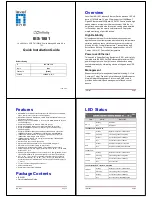
B-19
Catalyst 2975 Switch Software Configuration Guide
OL-19720-02
Appendix B Working with the Cisco IOS File System, Configuration Files, and Software Images
Working with Configuration Files
Clearing the Startup Configuration File
To clear the contents of your startup configuration, use the
erase nvram:
or the
erase startup-config
privileged EXEC command.
Caution
You cannot restore the startup configuration file after it has been deleted.
Deleting a Stored Configuration File
To delete a saved configuration from flash memory, use the
delete flash:
filename
privileged EXEC
command. Depending on the setting of the
file prompt
global configuration command, you might be
prompted for confirmation before you delete a file. By default, the switch prompts for confirmation on
destructive file operations. For more information about the
file prompt
command, see the
Cisco IOS
Command Reference for Release 12.2
.
Caution
You cannot restore a file after it has been deleted.
Replacing and Rolling Back Configurations
The configuration replacement and rollback feature replaces the running configuration with any saved
Cisco IOS configuration file. You can use the rollback function to roll back to a previous configuration.
These sections contain this information:
•
Understanding Configuration Replacement and Rollback, page B-19
•
Configuration Guidelines, page B-21
•
Configuring the Configuration Archive, page B-21
•
Performing a Configuration Replacement or Rollback Operation, page B-22
Understanding Configuration Replacement and Rollback
To use the configuration replacement and rollback feature, you should understand these concepts:
•
Archiving a Configuration, page B-19
•
Replacing a Configuration, page B-20
•
Rolling Back a Configuration, page B-20
Archiving a Configuration
The configuration archive provides a mechanism to store, organize, and manage an archive of
configuration files. The
configure replace
privileged EXEC command increases the configuration
rollback capability. As an alternative, you can save copies of the running configuration by using the
copy
running-config
destination-url
privileged EXEC command, storing the replacement file either locally
or remotely. However, this method lacks any automated file management. The configuration
replacement and rollback feature can automatically save copies of the running configuration to the
configuration archive.
















































